Here are the native and non-native flowers and plants that are blooming this month in my Sierra foothill garden.
The green seedpods of the Chocolate-scented daisy will dry in a layered pattern circling the center of the flower. None of the seeds I collected sprouted with the winter-sown method this year so further reading will have to be done to grow these from seed. They really do have a chocolate smell!
In the new meadow, the Clarkias are blooming, adding a carnival of color combining with the still blooming poppies and the powder blue Globe gilia.
The Cleveland sage looks great next to the Black-eyed Susans, I think, and both bloom at the same time in June.
Columbine makes long lasting cut flowers, reseed and need little water or care. You don’t need to dead head them and deer don’t eat them, so what’s not to like? These, planted three years ago from one six-pak, are in the rain garden which gets a little more water from the downspouts, but only in the winter and spring rainy season. A few new plants reseed each year.
This Elegant Madia, with the distinctive rusty brown petal edges, attracts lots of insects, crickets or katydids and juvenile ladybugs, maybe? Does anyone know?
The summer after the house was built, I noticed a golden glow coming from this oak tree….and discovered that a Flannel bush, now a tree, with a five inch wide trunk is growing up and out looking for the sun. I made sure the tree trimmers didn’t decide to cut it last fall. Ha!
Here’s a closer look (if you click the photo)
When it’s time for their bloom, it’s a good time to look for others in the area. This one is in a remote area of the property in the steeply sloped meadow below the goat shed.
The flowers of the flannel bush have a fleshy lush look to them that contrasts with the dry shrubby look of the entire plant. The blooming branches can be cut and brought indoors for a dramatic looking centerpiece.
Globe Gilia is new to me and I really like it! It’s a sea of light blue hovering over the meadow and if you click on the photo, you’ll see how they stand above, some almost 3 feet high and how thick they are. It’s interesting how often blue and orange, two opposite colors on the color wheel, occur in nature.
The lowly gum plant….I paid 7.50 for two at the native plant nursery and felt a bit chagrinned later after seeing them grow like weeds along the roadsides right in our neighborhood. However now, I like them very much. I planted these two on a south facing slope, very dry and they act very much like a Coreopsis or a Rudbeckia. Blooming in June and reseeding politely, expanding by a few plants each year, I’ll be glad to see these spread and replace other weedier non-natives. The flowers give the plant its name. The centers look as if they have a dab of clear, always wet looking gum, or to me, looks like clear, wet glue. At some point, I’d like to get a nice shot of the flower in this stage.
The Iris pallida blooms at the same time as the color-matched lavender blue Scabiosa, or pincushion flower just behind it. I built the rock steps from stones found here on the place. Some I rescued, dodging bulldozers constructing the septic system holes. The center cement pedestal holding the shallow pot, was found on trash day in the city and brought up here on moving day. (All I can say is I have a very tolerant husband who didn’t even blink when seeing that I wanted all my junk brought up here. I’m not sure about the friends he asked to help us move.)
The light grey plants at the top right, in the photo above, are Snow in Summer, finished now; it follows the dry stream down the hill. The dry stream is built from the end of the roof downspouts and directs water down to the rain garden.
A few weeks ago, I mentioned this newly identified plant, the Chaparral honeysuckle before it had bloomed…here it is, blooming now in mid-June. The smell of this vine, growing up through the manzanita, is heavenly and fills the air. Since identifying it and becoming more aware of it, I find it popping up all over the place and will now encourage it instead of it and point it out to Tractor Man as he does the weedeating.
My precious Matilija poppy is blooming after 5 years of sitting at the height of 6 inches. I’m very happy about it.
I can’t recommend the Sulfur Flower buckwheat more highly. It’s a perfect foothills garden plant, mounding, compact and long blooming, very long blooming,… nearly a month. Here it combines nicely with Spirea ‘Goldmound’ and Pineapple mint. This is an area along the steps down from the upper to lower patios that gets no water, other than hosing off the steps now and then, and the mint seems to behave under the very dry conditions there.
The Penstemon, above, is one of the $1 plants bought at last fall’s plant sale. The blooms remind me of the Foothill penstemon I’ve been babying up on a very dry clay bank and these ‘Margarita BOP’ are performing much better, blooming profusely even in their first season. The penstemon below, ‘Violet Dusk’, is large flowered and lush around the edges of the newly planted meadow.
My notion that these bargain perennials would anchor the meadow, providing added color and mass around the edges seems to be working out just fine. The other plants for this purpose, sages and agastaches will need another year, it seems, to distinguish themselves.
On the wild side, here are the Yerba Santas in the only season in which they look halfway decent. In fall, winter and spring they are rangy and messy. The thing to do is whack them down to 6 inches and allow them to get bushier. This one has been treated like that and looks a bit better than most.
I always forget how pretty the flower is. This particular bush has been mowed every year except this year.
This patch, one plant, of ‘Pink Chintz’ is in exactly the right spot on a dry bank. It is obviously happy here. In California, when nothing else will grow, plant thyme, rosemary and lavender. Iris is also a survivor and all of these kinds of plants were planted here on the property before we moved up and only received monthly water for five years before the house was built. All are deer-resistant.
The Wavy-leafed soap plant…I first discovered it when the backhoe man came to dig the septic lines. Digging down ten feet, ever once in a while we’d see these soap plant roots and how far down they grow. Can you guess? Two feet down!
Nearly impossible to dig, the indigenous people of California did so and used this plant for soap, rubbing the crushed bulb into hands or clothes to make a lather and for food, baked in poison oak leaves (shudder). Conversely, the bulb was cooked, ground into a paste to treat poison oak rash. Soap root was used in so many ways by the native Californians, interesting ways that an entire post could be written just about this subject. I would not want the job of digging one up on a daily basis.
Soon this six foot tall spire will bloom into a lacey tower of delicate white flowers.
Wooly Mullein is also known as bunny’s ear, flannel leaf, candlewick plant and hag taper. Considered a friendly weed by herbalists who make teas and concoctions from it, I also like this plant in the wild garden, especially when it seeds itself in a spot in the garden where it can act as a standard or tall accent. As a biennial, in the first year it forms a huge furry rosette up to 2 feet wide. In its first year, I took some photos of this same plant for a Design in Nature post.
In the second year, it begins to bolt into the tall seed head shown above. Before the seeds dry, I clip off this seed head and throw it away and eventually remove the entire plant and the show is over. But what a show! Even though there are millions of seeds produced in this seed head, mullien rarely becomes invasive because it needs sunlight to sprout and mostly pops up in disturbed soil. Each year, I usually only have one or two reach a full grown stage. If you want these in your garden, all you have to do is find one along the roadside that’s near seeding and clip it off and lay it down where you want it to grow.
There are so many discoveries of new plants this month and new developments in my meadow project that I decided to write separate upcoming posts on each subject.
Meantime, see the most unwanted plant that appears stubbornly in my garden. Ain’t it beautiful and healthy?

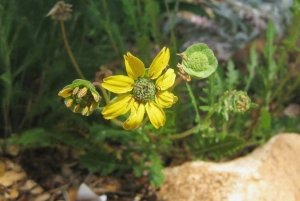
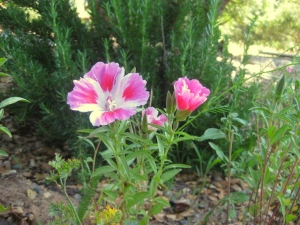
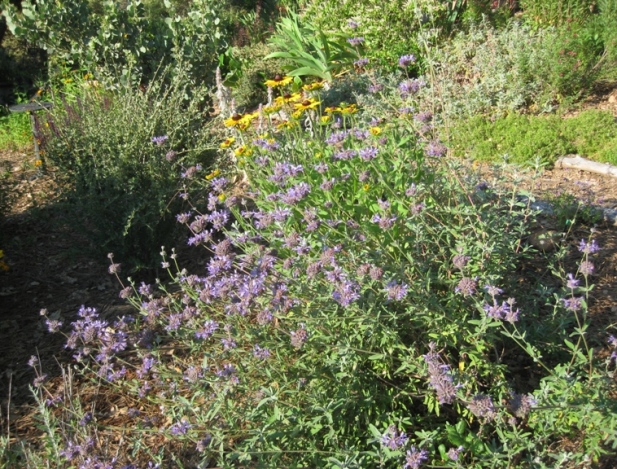

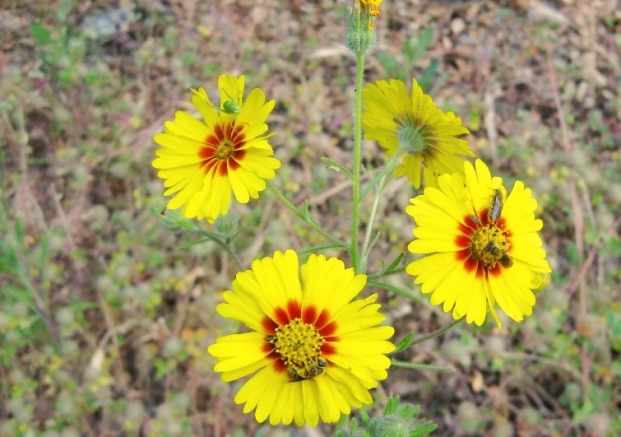
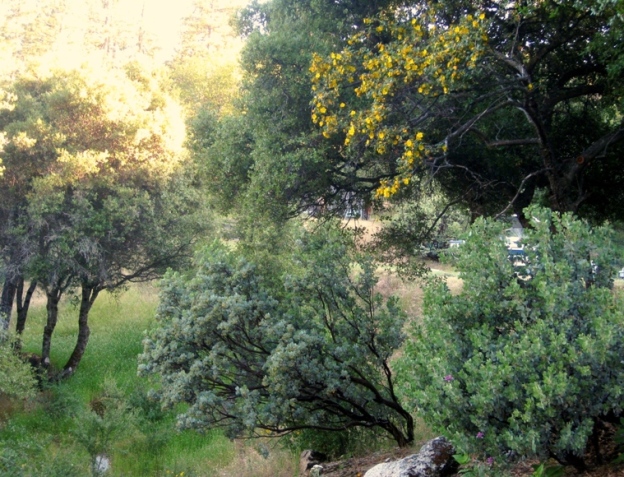
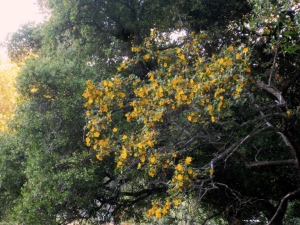
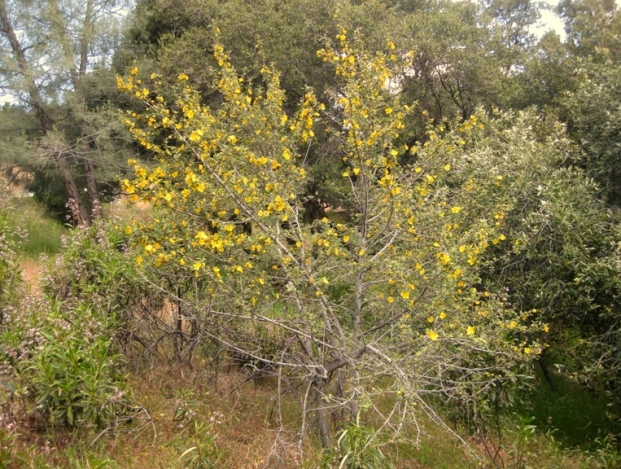
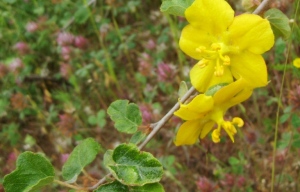
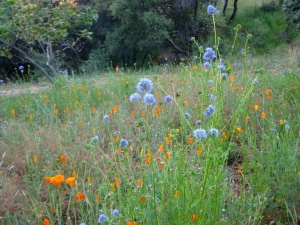
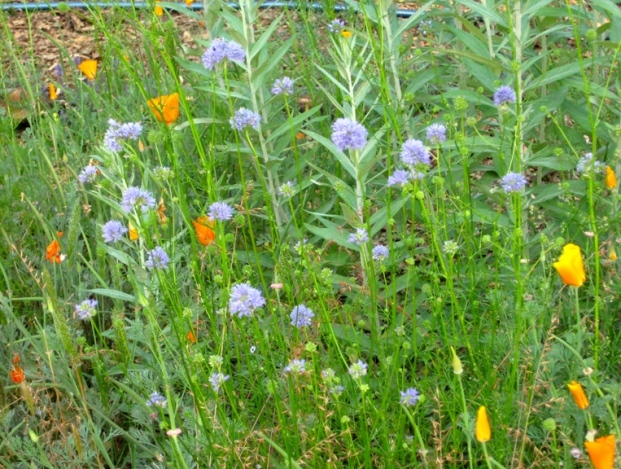
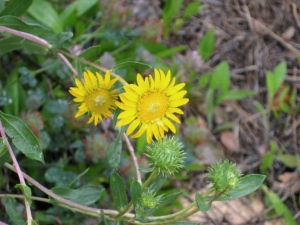
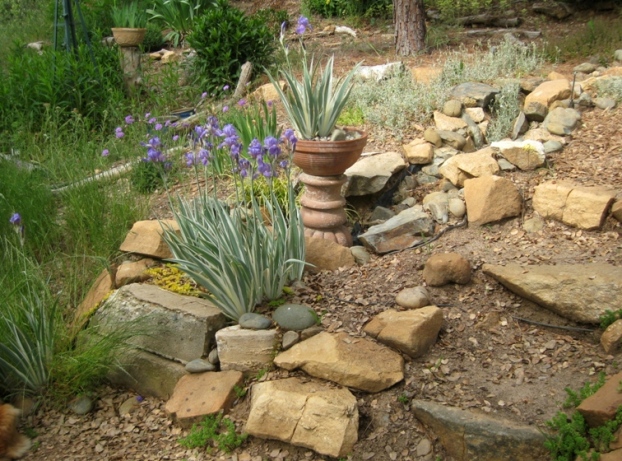
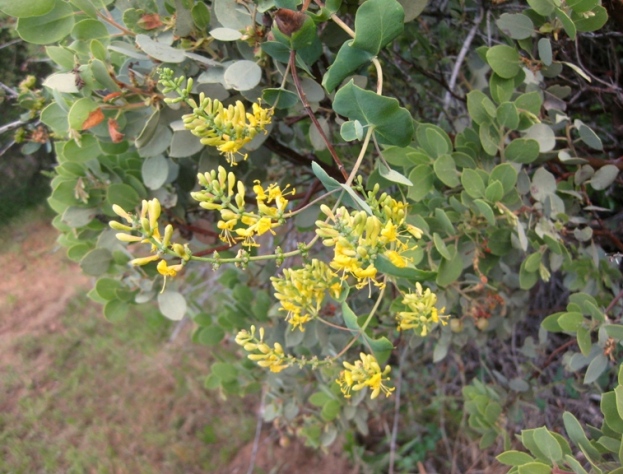
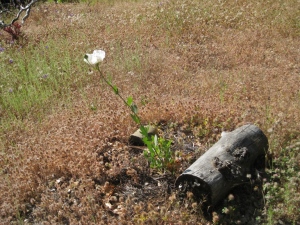
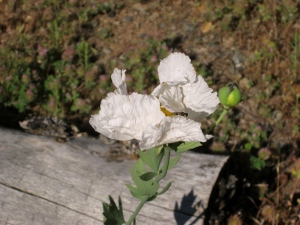

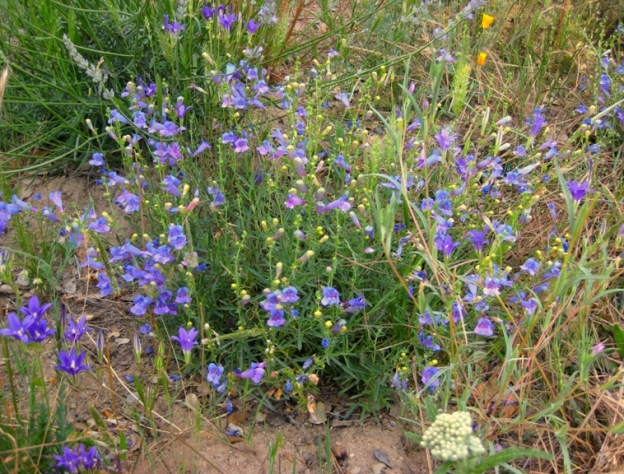
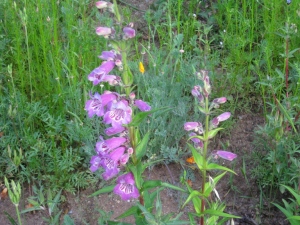

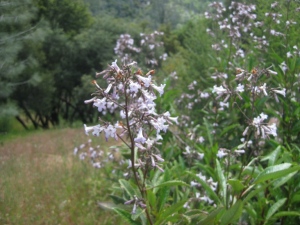
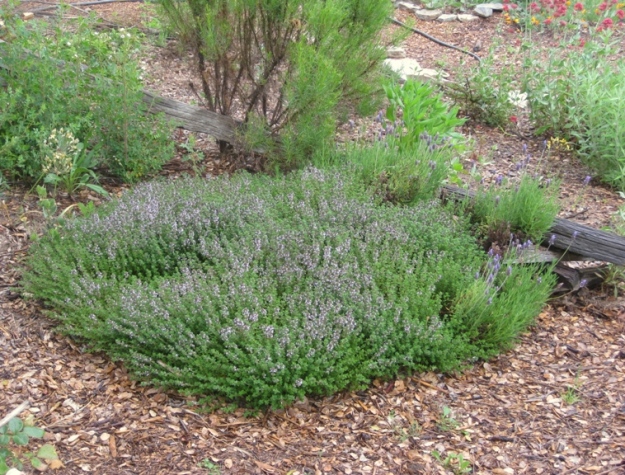
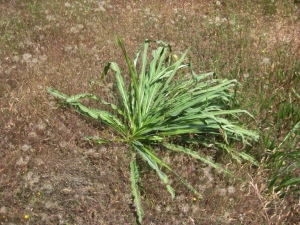
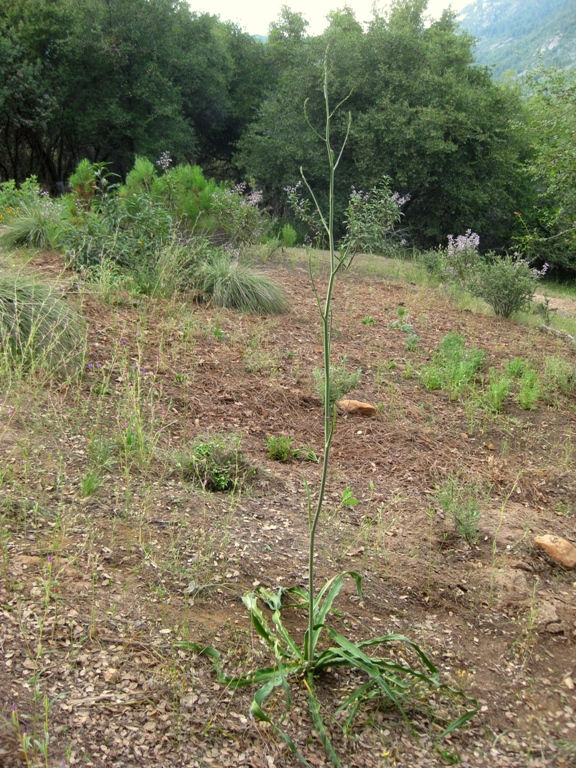
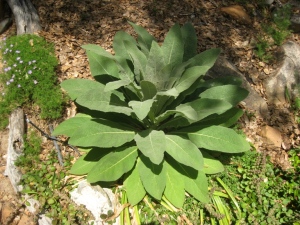


7 comments